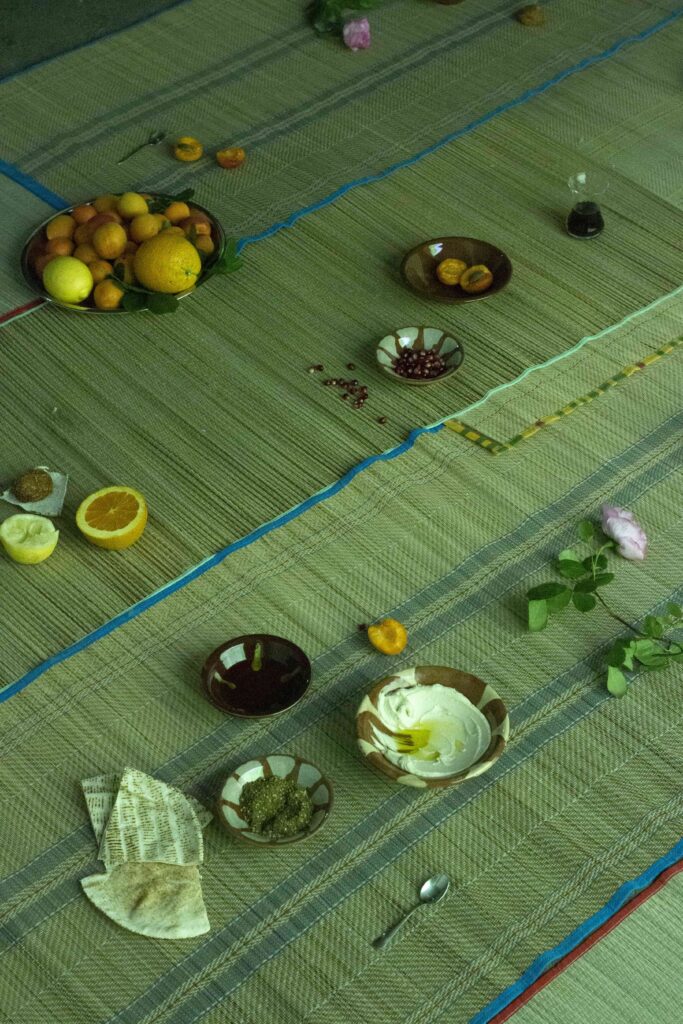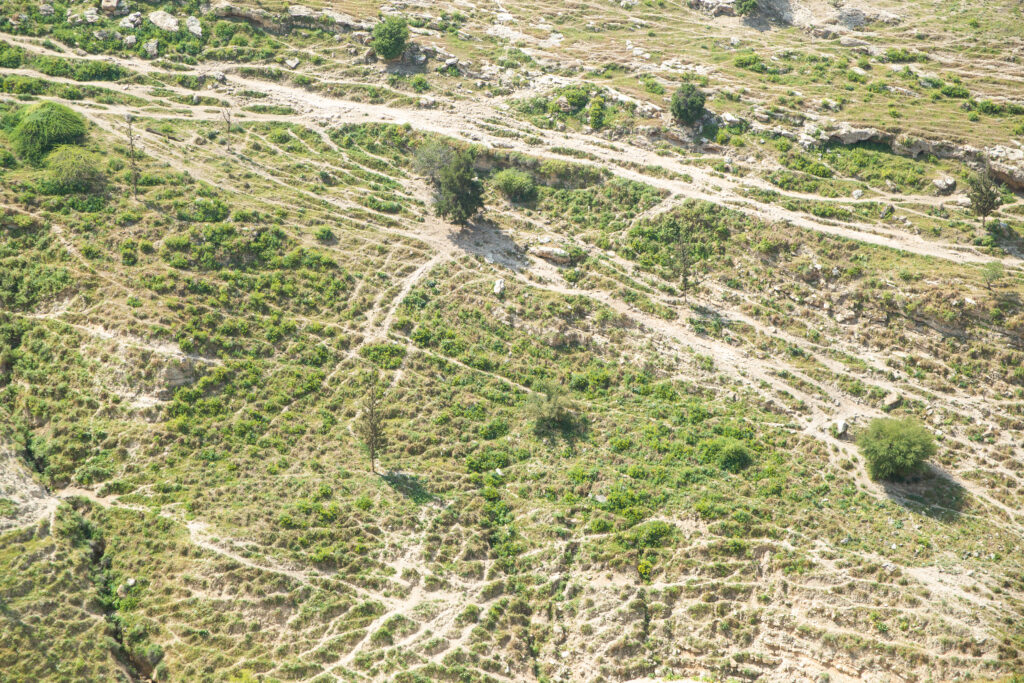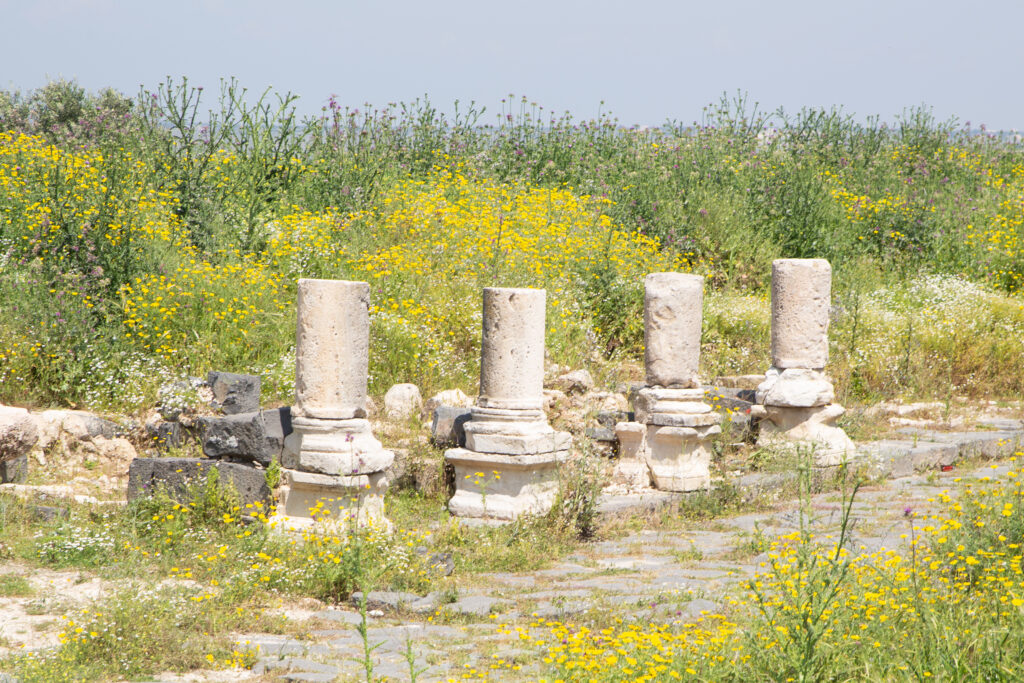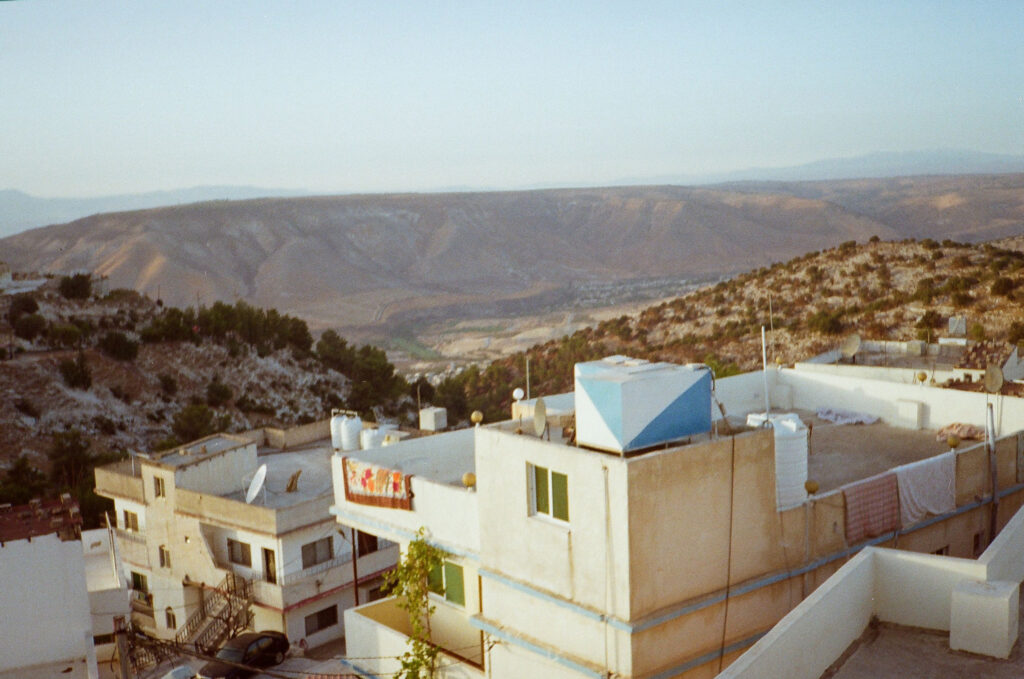Words by Nadia El-Hindi
Featured image by Nadia El-Hindi
This article is part of the “Sana Wara Sana” issue
Louisa Yousfi, Rester Barbare (2022)“How do you mourn an authenticity never known and yet truly lost?”
Born in Syria, my father left his country at the age of 19 to build his life in Switzerland and never returned. He carries within him the values and memories of a Damascus now unrecognizable, scarred by war and transformed by modernization, and almost no photographs or objects. I carry a last name, rooted in a language I don’t speak, and a few habits that reflect our immigration. These Syrian roots have infused my identity, yet having never set foot on that land, the culture doesn’t fully feel like my own.
I grew up with a vague and approximate idea of his past, constructed from fragmented anecdotes and a few accessible references, but over the years, I felt an urgent need to give substance to this heritage for myself. Four years ago, I spent several days with my father, exhuming his memories of Syria. We don’t usually discuss personal suffering in our family, and I wanted to respect that modesty, refraining from asking questions that might place my father in an uncomfortable or vulnerable position. I asked him to describe the objects, landscapes, and people around him, and he spoke of his home, school, and weekend rituals, the music he listened to, the dishes he loved. But as we embarked on this process – me trying to fill my mind with images, sounds, and scents to make them my own – his recounting naturally led us into intimate and emotional territory. How can you describe a habit without explaining its context?
I took the time to transcribe this exchange, and together, we chose one of his fondest memories to recreate it in an installation. I’d just completed my bachelor’s degree in product design, through which I developed a sensitivity to atmospheres and the details of objects that shape our cultural heritage, as well as my desire to use scenography to make tangible what felt abstract.

We gathered items from home – ceramic bowls for mezze, a keffiyeh, and floor mats – and went to a “Multibazaar” and other Levantine grocery stores in Geneva to select items that matched his descriptions. We carefully selected tea glasses with flared rims and indented centers, pearled grained steel serving trays, polished stainless steel and blue enameled steel teapots. And on the day of the opening, we went to our favorite Syrian snack shop to buy turnip pickles, Mshallaleh cheese, apricots, lemons, oranges, and falafel; and my mother even picked flowers resembling Damascus roses. In May 2021, with the help of my mother and sister, we recreated a picnic in Ghouta at a cultural space in Geneva.
Photography by Swann-Fardel
As if in search of a lost truth, this project marked the beginning of a long journey toward the elusive authenticity that imbues my origins. From a distance, it’s hard to progress in this exploration and to assess the value of new findings. How do we distinguish what truly belongs to us from what’s been distorted by stereotypes, romanticism, Orientalism, and racism? As time passes, cultural transmission fades, leaving future generations with a nebulous heritage. How do we resist the erasure and the whitewashing of our identities? This process is less a historical search than an instinctive, intimate quest—the quest of an immigrant’s descendant.
Inherited Distance and Cultural Transmission
The concept of “inherited distance” seems paradoxical. It speaks of belonging without presence, of an intangible bond. It’s a concept that arises in silences and fragments, in the partial transmission of a culture never fully lived. For descendants of exiles, this distance isn’t just geographical; it’s intimate, emotional, and cultural. It captures the strange, complex connection with roots that feel familiar yet remain elusive. I feel nostalgia for memories I’ve never experienced, like a memory by proxy. My father left Syria decades ago, a Syria he would likely no longer recognize today, but he still transmitted echoes of it through the hints that surround me now: the smell of Aleppo soap, the melodies of Fairuz, the Syrian za’atar in my kitchen. The distance between what I’ve inherited and what I’ll never fully grasp has always struck me; the kousa mahshi on the table is as much mine as it isn’t.
But what holds back this access? To grasp the obstacles to this cultural transmission in Western countries and understand the difficulty of this reclamation, we must first consider the elements that hinder this quest.
One of the most striking of those elements is how Western media represents Syria and, at large, the Levantine region. Their responsibility is particularly evident in the current context, where media rhetoric uses the image of the barbarian to construct dehumanizing narratives. This reductive vision is reinforced by the iconography used: bombings, rubble, faces frozen in fear. Scenes of chaos saturate the discourse and smother the depth of our heritage under a cloud of destruction. These scenes are real, and it would be incorrect to ignore them. However, receiving only this portrayal erases the context and cultural richness that is being destroyed by the war. Media suggests that our countries never existed (and still don’t exist) outside of war, as if they were never capable of gentleness, knowledge, art, music, and culture. For those of us trying to reconnect with this heritage, this media framing has a double effect: it both reminds us of the scars of our origins and deprives us of a living imagination, a space where these cultures exist with all the complexity and vitality that animate them today in their struggles.


Photography by Nadia El-Hindi
This desire to counterbalance the extreme violence of these representations and what they imply likely drives many of us to reconnect with images of the past, to draw from the history of an extremely rich cultural heritage, often erased. This approach sometimes plunges us into a romanticized and idealized conception of “authenticity,” raising the question: Has the West influenced us to the point that the resources we are drawn to derive their aesthetics from the colonial representations? Or is it the filter of nostalgia activated as a survival reflex? Nostalgia sometimes tints images with romanticism and “glamorizes” history to soothe pain, to restore depth, dignity, and bring out the gentleness of our stories. Yet, from a distance, it is sometimes hard to distinguish between nostalgia and internalized Orientalism.
During our discussions, my father confided, “Western society can be hostile to the Arab community. So, to fit in, we hide certain cultural markers to avoid discrimination.” My parents have no accent, don’t practice a religion, avoid raising their voices so as not to disturb the neighbors, and speak French to their children. They sought to live and offer us a peaceful life in a stable country, and I don’t blame them for choosing this path, for prioritizing our living conditions over cultural transmission. My focus is rather on these external pressures and the institutional racism embedded in these mechanisms. What is called “integration policies” often resembles policies of forced assimilation, mandated whiteness. Like many other immigrant parents, mine adapted their behavior to better integrate. Through my research on cultural transmission, I became aware of the responsibility the State bears in this intergenerational rupture. “When you are a minority, transmitting your cultural heritage is never simple, especially because the predominant group deems minority cultures as useless, even dangerous, since they accentuate differences” (Fatima Ouassak, La Puissance des Mères (2021)).
So Close, Yet So Distant
This year, while attending an art residency in Jordan, I was driving to Umm Qais, a village on the Syrian border. It was a Friday, and while crossing the countryside, a scene struck me so deeply it took my breath away: families were sitting under the shade of trees and cars, having picnics to celebrate spring. This moment felt like a flashback to the picnic we recreated three years earlier in Geneva. When I arrived at my destination, I stopped at a viewpoint and glimpsed Syria—so close, yet so distant. This vision overwhelmed me, leaving me both genuinely happy and profoundly sad, in contrast with the peaceful beauty of what I observed and the suffering of that land anchored in our personal history.

Photography by Berengère Bussiozl
In that moment, I grasped the depth of this “inherited distance” that separates me from my roots, a distance as intimately emotional as it is geographic. I am now able to understand the power of intimate stories and how they reveal the profound truths of an identity impossible to reduce or summarize. With my father’s personal stories, I sought to reconnect with an identity while avoiding seeing it through the Western lens. It allows me this sincere exploration of an exiled’s heritage. In a Western context, where borders harden and crises intensify, the question of cultural heritage preservation has become more urgent than ever.
I am not alone in this quest. Other women of immigrant descent – including Lina Soualem, Hajer Ben Boubakar, Fatima Ouassak, Louisa Yousfi, Safia Kessas, and Romaisa Baddar – explore these questions through writing, cinema, and art. Through archives, life stories, or politics, they weave connections with their roots and resist cultural erasure. For us, daughters of immigrants, reclaiming these stories is a necessity—not to preserve historical accuracy or find a universal authenticity, but to nurture the emotional richness of our identities and claim our existence in a society that alienates us and our cultures.

